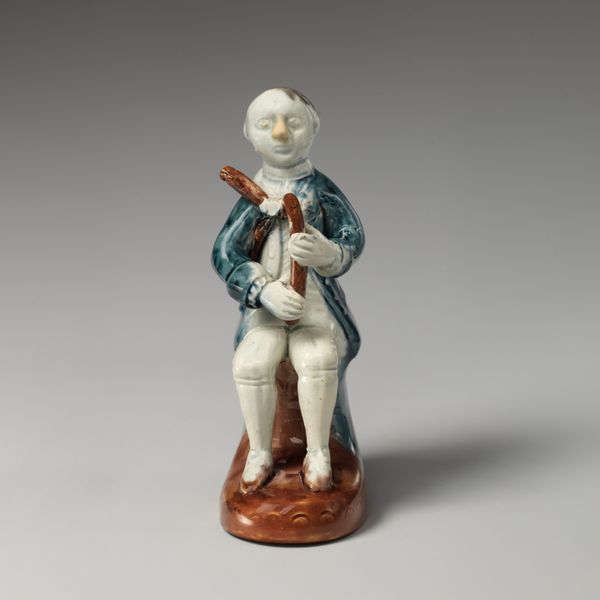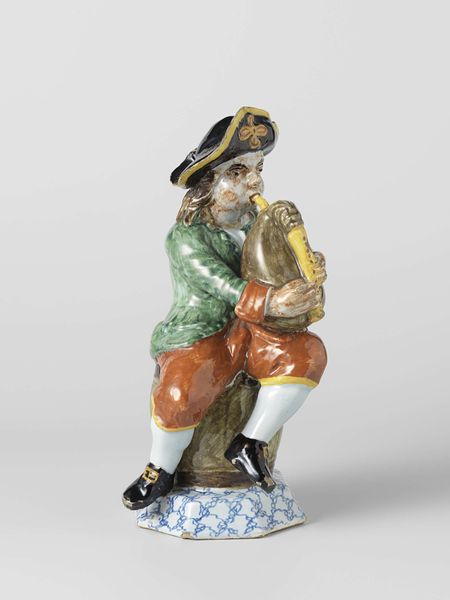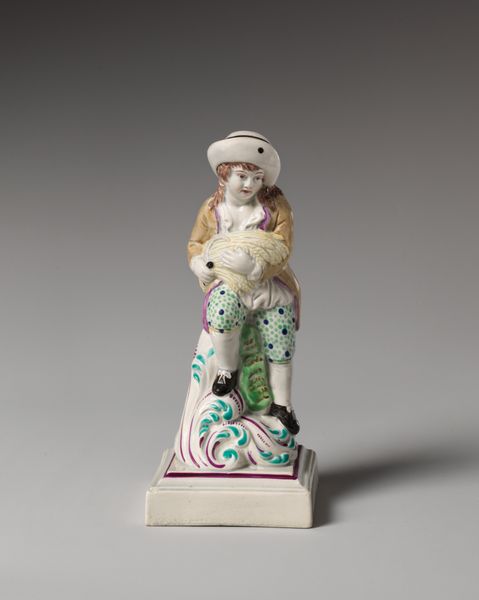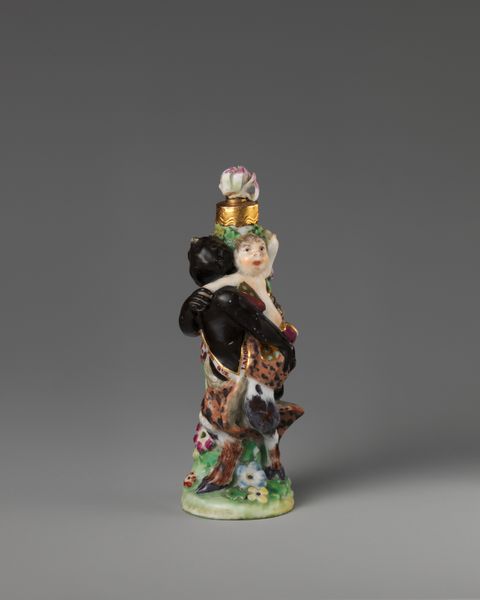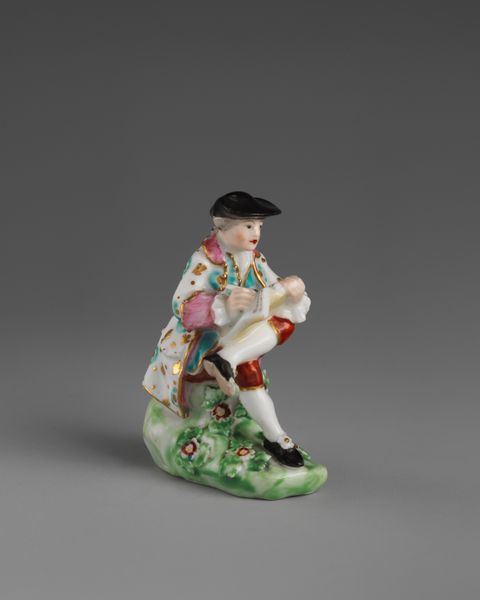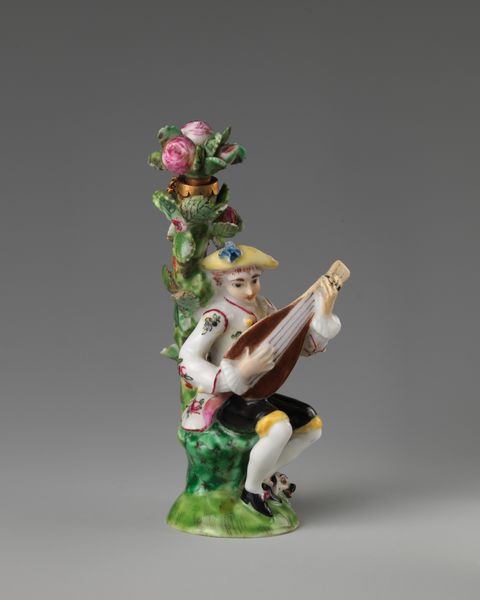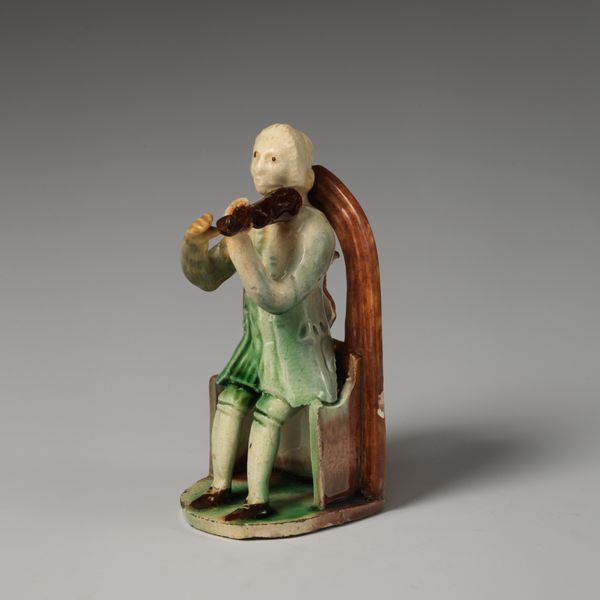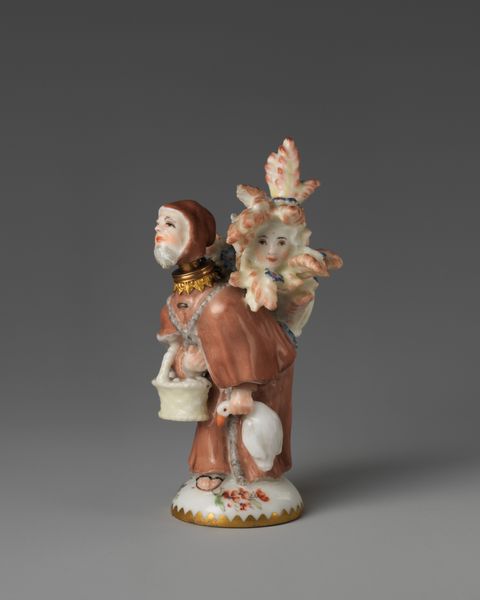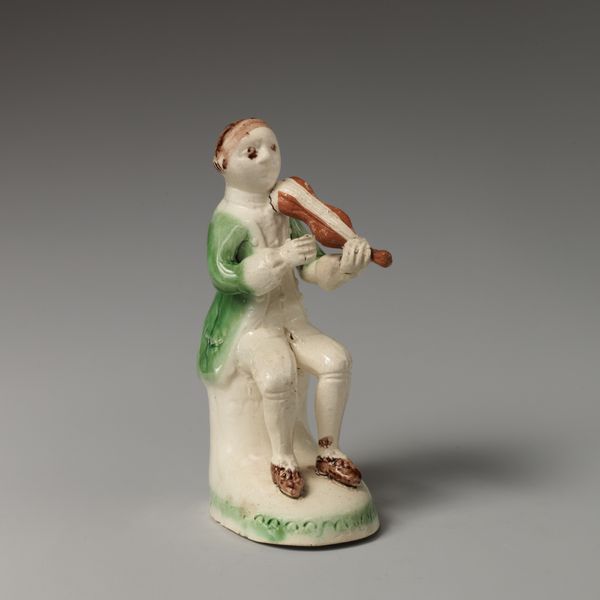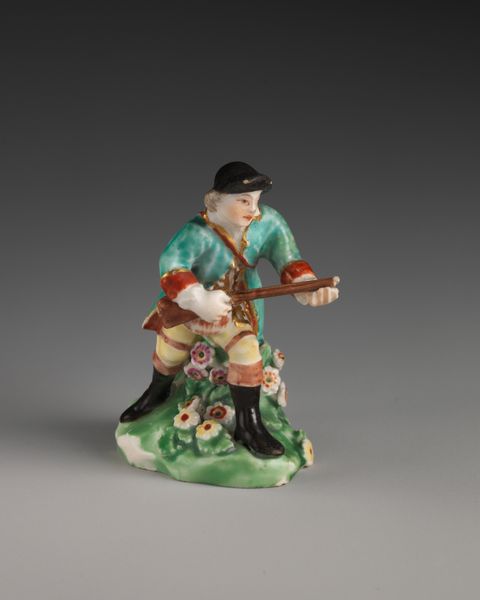
ceramic, sculpture
#
portrait
#
baroque
#
ceramic
#
figuration
#
sculpture
#
men
#
decorative-art
Dimensions: Height: 5 1/8 in. (13 cm)
Copyright: Public Domain
Editor: This is an Astbury-Whieldon ceramic sculpture entitled "Bagpiper," created around 1740-1750. The glaze is interesting – it gives a folksy, almost cartoonish quality. What stories do you think this little figure might tell? Curator: Ah, this unassuming piper resonates deeply. Notice the chromatic distribution and modeled plasticity, which gives form and expression to folk culture, particularly its celebration of music and social gatherings. He doesn't just play music; he *is* music, isn't he? A conduit for community and collective memory. What does the bagpipe represent to you? Editor: I guess I hadn’t considered that – beyond, you know, just being an instrument. The sculpture itself is pretty small. It seems meant for a mantelpiece, something domestic. Does its size impact the symbolism? Curator: Indeed. Miniaturization amplifies meaning, as a small copy renders power more manageable and therefore more understandable. The placement of such an item at one's home indicates his importance to the family in terms of identity formation. Who was the intended audience for this image? What needs were they hoping to meet? Editor: Hmm, people with a Scottish heritage? Or maybe just those who enjoyed that type of music? Is it too simplistic to read it as mere decoration? Curator: Decoration *is* never "mere". It embeds cultural values, reinforces social bonds, and articulates power dynamics. It may be a marker of refinement to show your love of musicality, class and sophistication and a wealth of associations with festivity. Editor: I see, so it’s more complex than I first imagined! Thanks. Curator: The figure reminds us that these seemingly simple artifacts are full of cultural codes! I now see the importance of decorative items and how cultural values are rendered concrete via repeated visuals.
Comments
No comments
Be the first to comment and join the conversation on the ultimate creative platform.
